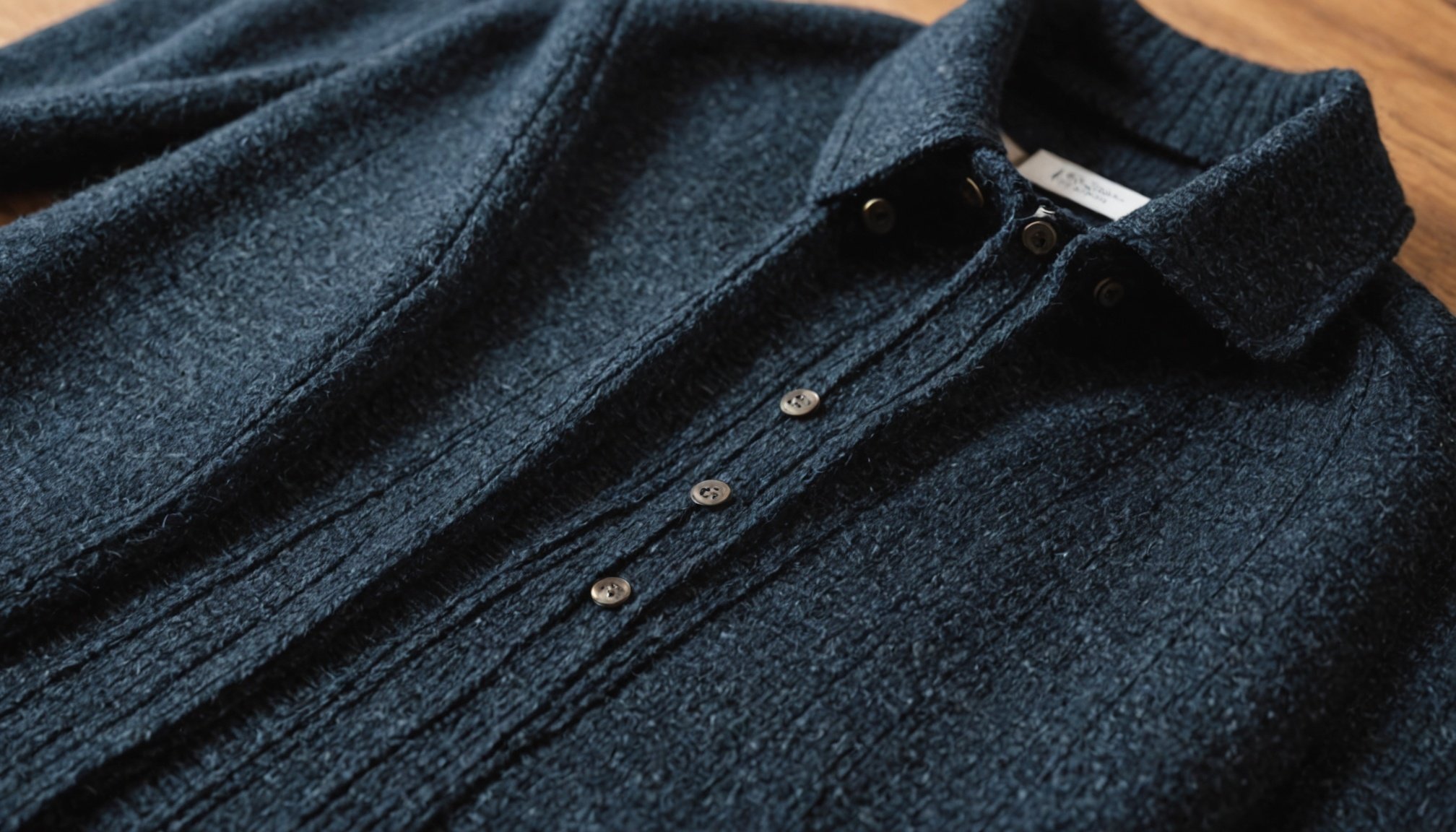Understanding Wool Fibers and Their Properties
Wool fibers are renowned for their distinct properties and play a critical role in their applications. Fibers like Merino, Shetland, and Cashmere, each have unique characteristics that offer various benefits. For instance, Merino wool is favoured for its fine texture, making it ideal for soft garments. Understanding these wool types is essential, especially in selecting the right garment for specific needs.
The properties of wool extend beyond its origin, encompassing features like moisture-wicking and temperature regulation. Wool’s natural fiber characteristics allow it to absorb moisture without feeling damp, which helps in maintaining body temperature—rarely matched by synthetic materials. These qualities make wool an exceptional choice for both warm and cool climates.
Also to discover : Transform Your Ensemble: Chic Ways to Wear a Chunky Wool Sweater for Elegant Nights in the Welsh Countryside
Grasping the characteristics of wool fibers is crucial for proper care. With the right care techniques, you can preserve the quality and longevity of wool garments. This means understanding the nuances of dealing with different wool types and approaches to storage, cleaning, and maintenance.
An awareness of wool properties also aids in maximizing the lifespan and performance of your woolen items, making informed decisions about garment care.
Also to see : Choosing the Ideal Silk for Your Enchanting Evening Dress: An Ultimate Guide
Washing Techniques for Wool Garments
Proper wool washing is crucial in maintaining the integrity and appearance of your garments. Whether opting for hand wash or using a machine, each method has specific procedures to ensure wool fibers remain undamaged. Hand washing is often recommended due to its gentleness. Use lukewarm water and a mild detergent specifically designed for wool, which helps in retaining the fiber characteristics. Gently agitate the garment without wringing to prevent stretching.
For machine wash, choose a gentle cycle with cold water and a low spin setting to mimic the gentle nature of hand washing. Many modern washing machines offer a specific wool cycle. The detergents play a pivotal role here as well; those free from enzymes and bleach are preferable to maintain the wool’s inherent properties.
A vital aspect of wool care is avoiding common mistakes such as using hot water or conventional detergents, which can lead to shrinkage or felting. Follow the care instructions on your garment label: they are there to guide you in preserving its best qualities. By being mindful of these cleaning methods, you can extend the life and beauty of your wool clothing.
Storing Wool Garments Properly
Proper wool storage is key to preserving your garments’ longevity and maintaining their pristine condition. You want to keep your wool items carefully organized to ensure they remain damage-free and ready for use when needed.
Seasonal storage requires special attention, so begin by cleaning your garments, as moths are attracted to residues like food stains and sweat. Once clean, fold the items gently instead of hanging them; this prevents stretching. Utilize breathable cotton bags or boxes to store the wool, promoting airflow while protecting from dust.
To combat moths and ensure the safety of your garments, incorporate preventive measures. Consider cedar balls or lavender sachets, as these natural deterrents are both effective and environmentally friendly. Remember, the ideal storage conditions involve maintaining a stable temperature and low humidity. Excess moisture promotes mildew, which can damage fiber characteristics and compromise fabric durability.
By prioritizing garment care during storage, you’re laying the groundwork for consistent aesthetics and functionality. Incorporate organisation tips into your routine to invest in clothing protection actively, ensuring wool clothing stays a reliable, elegant choice in your wardrobe.
Common Mistakes in Wool Care
Navigating the world of wool care can be tricky, with several common pitfalls that can significantly impact the integrity and lifespan of your garments. Recognising these wool care mistakes is crucial in avoiding them and conserving your woolen assets.
One frequent error is exposing wool to hot water or high heat during washing or drying. This can cause shrinkage or even felting, altering the garment’s size and texture. Instead, use tepid water and gentle settings on washing machines, and opt for air drying to maintain its shape.
Another typical pitfall to avoid is using conventional detergents and fabric softeners. These products often contain enzymes and perfumes that might strip the wool of its natural oils, leading to brittleness. Choose wool-specific detergents, which are formulated to clean without damaging the fibers.
Improper storage, particularly in humid environments, can compromise wool’s appearance and longevity. Store in dry, cool spaces using breathable bags to avoid mould and pest infestations. These efforts will ensure your wool retains its original beauty and functionality.
Troubleshooting poor wool maintenance requires understanding these mistakes to protect your precious garments proactively. Arm yourself with proper advice to keep your wool items looking new and feeling luxurious.
Troubleshooting Wool Issues
Wool is a fabulous material, but it can face some challenges. One common issue is pilling; these tiny balls of fiber can form due to friction. An effective way to manage this is by using a fabric comb or pilling remover. Remember, regular gentle combing can maintain smoothness with minimal fiber loss.
Shrinkage is another wool nuisance. If a garment shrinks, it’s crucial to act quickly. Begin by soaking it in lukewarm water with hair conditioner or baby shampoo, which helps relax the fibers. Gently stretch the wool back to its original shape, then lay it flat to dry. This technique doesn’t guarantee full recovery but often restores some size.
Stains on wool require prompt action. Blot, don’t rub, with a clean cloth. Then, apply a wool-safe detergent or mild vinegar solution. Rinse it with cool water to prevent spreading or setting. This method is gentle, protecting wool’s fiber characteristics without harsh chemicals.
These maintenance tips ensure your wool remains in excellent condition, preserving the wool’s properties that are so revered. Understanding and addressing these common problems keeps your wool garments fresh and long-lasting, providing practical solutions for care challenges.
Expert Tips for Long-Lasting Wool Quality
Ensuring long-lasting quality in wool garments requires a keen understanding of wool care tips and expert guidance. Implementing these insights can significantly enhance your garments’ lifespan, maintaining their beauty and functionality over time.
One fine method is gently combing wool fibers to prevent pilling, a common issue that detracts from appearance. Regular use of a fabric comb keeps garments looking fresh without compromising the fiber structure. Additionally, while air drying is often best, laying items flat on a clean towel and reshaping them promotes retention of the original form, avoiding the warping that sometimes accompanies hanging them up.
Exploring the effectiveness of care products is vital. Wool-specific detergents, particularly those without enzymes, protect the natural oils in fibers. These particular detergents contribute to garment longevity by ensuring gentle cleaning without stripping beneficial oils, bolstering your wool items’ durability and quality.
Lastly, safeguard your wool by following conscientious garment care routines. Rotate between wearing different items to reduce stress on particular pieces and store items appropriately during off-season months. This proactive approach integrates into everyday habits, ensuring your wool clothing embodies elegance and withstands the test of time.
Drying Wool Items Safely
After washing, wool drying is the next crucial step in maintaining the integrity of your garments. Whether you choose air drying or a gentle tumble drying, the goal is to prevent shrinkage and damage while preserving the wool’s nature.
Effective Drying Methods
-
Air Drying: This technique is often preferred for its gentleness. Lay the garment flat on a clean towel, shaping it to its original form. This prevents stretching and distortion that can occur if the garment is hung. Moreover, laying wool flat helps to maintain its size by allowing natural evaporation without direct heat exposure.
-
Tumble Drying: Only advisable for those machines with a dedicated wool setting. This cycle uses low heat and slow rotation, imitating the softness of air drying. Remember, not all wool items can tolerate tumble drying, so always check care labels before proceeding.
Precautions and Tips
To avoid shrinkage, keep wool items away from direct sunlight or heating sources. These can overstimulate fibers, causing the material to contract. During the drying process, gently reshape wool items, ensuring they retain structure and fit.
By following these drying techniques, you ensure your wool garments remain sleek, luxurious, and perfectly shaped.











